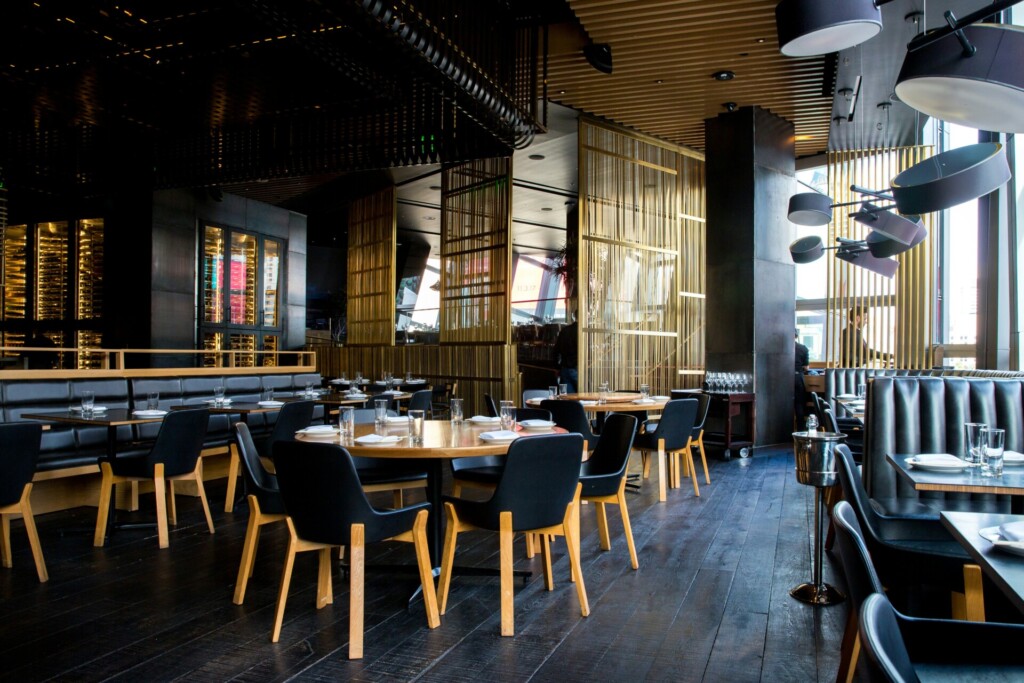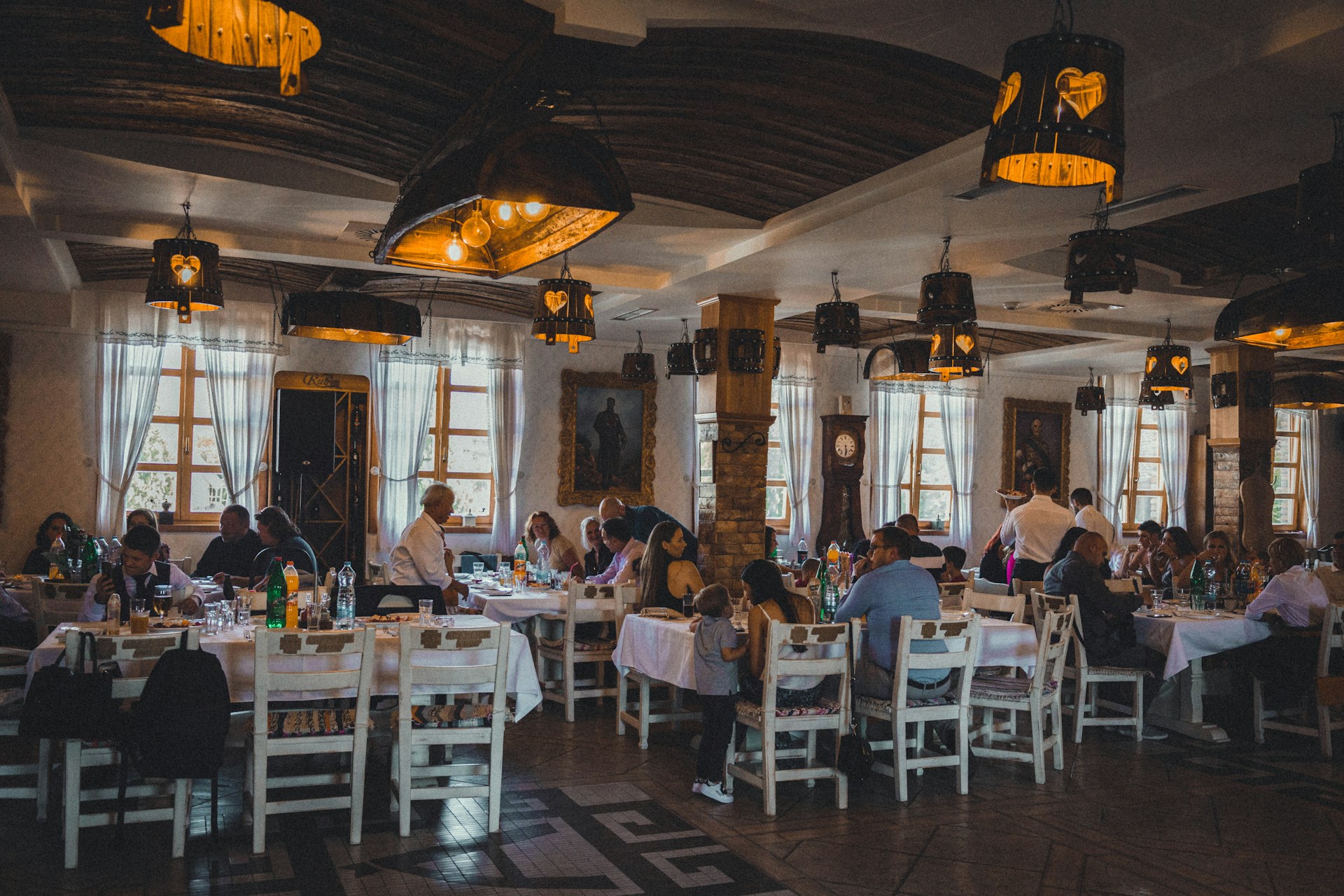Opening a restaurant in Texas requires careful planning and preparation to avoid costly mistakes. Although 17% of restaurants fail in their first year, understanding common pitfalls can significantly increase your chances of success. From financial missteps to operational oversights, anticipating challenges before opening your doors can help establish a solid foundation for a thriving business in the competitive Texas restaurant market.
As experienced general contractors serving the restaurant industry, we have seen firsthand how proper planning in the early stages can determine the success of a new establishment. Our team at EB3 Construction collaborates closely with restaurateurs to navigate the complex process of building a new restaurant space. We coordinate all construction aspects and help owners avoid common mistakes that can derail projects or lead to costly delays.
Key areas where new restaurant owners often struggle include underestimating startup costs, failing to obtain proper permits and licenses, and not allowing enough time for construction and inspections. By partnering with an experienced contractor early on, you can develop realistic budgets and timelines while ensuring your space is built to code and ready to pass all necessary inspections. Our goal is to help you open your doors on time and on budget, setting you up for long-term success in the vibrant Texas restaurant scene.
How Can Insufficient Capital and Poor Financial Planning Impact Your Texas Restaurant?

Insufficient capital and poor financial planning can quickly derail even the most promising Texas restaurants. Without adequate startup funds and a solid financial strategy, your venture might be at risk before it even begins.
One major pitfall is underestimating initial costs. Restaurant owners often exhaust their capital on flashy decor or expensive equipment, only to run out of money before opening. It is wiser to set aside enough cash to cover 12-16 months of operating expenses, such as rent, payroll, and supplies. This financial cushion allows you time to build a customer base and address any operational issues.
Another critical error is failing to establish strong supplier relationships early on. By negotiating favorable terms and bulk discounts with vendors, you can substantially reduce your food costs over time. Don’t wait until you’re in a bind—start building these partnerships during the planning phase.
Menu pricing also requires careful consideration. If prices are set too high, you may drive customers away. Conversely, pricing too low can make it difficult to break even, let alone turn a profit. Conduct a thorough analysis of your food costs and local market rates to strike the right balance.
Importantly, many new restaurant owners overlook ongoing financial analysis and cash flow monitoring. Without closely tracking the numbers, you can’t foresee problems or manage spending effectively. Implement systems to track key metrics like food cost percentages, labor costs, and profit margins at least weekly.
Remember, in the restaurant business, cash is king. A solid liquidity plan is crucial to handle slow periods or unexpected expenses. Don’t leave your financial health to chance—take control by developing a comprehensive financial strategy before you fire up the grill.
Why Are Proper Licensing and Legal Compliance Critical for Texas Restaurants?
Obtaining the proper licenses and permits is essential for Texas restaurants to operate legally and avoid severe penalties. Without the required documentation, your establishment could be shut down and face substantial fines, potentially putting an end to your business before it even begins.
The licensing process for restaurants in Texas is complex, with requirements at both the federal and state levels. Unlike some industries, there isn’t a centralized application system – restaurant owners must navigate a patchwork of agencies and regulations. The U.S. Small Business Administration can provide guidance, but ultimately the responsibility is on you to ensure full compliance.
Beyond basic business licenses, restaurants must obtain specific food service permits and certifications, verifying that your establishment meets health and safety standards for food preparation and handling. Regular inspections will confirm your ongoing adherence to these regulations.
It is also crucial to consider how your restaurant business is legally structured. While sole proprietorships are simpler to set up, forming an LLC or corporation provides personal liability protection that could prove invaluable. This shields your personal assets in case of lawsuits or other legal issues.
The consequences of overlooking even minor licensing requirements can be severe. Health code violations can result in immediate closure until issues are resolved. Operating without a valid liquor license could mean hefty fines and a suspended ability to serve alcohol – a major blow to most restaurants’ revenue.
Ultimately, proper licensing and legal compliance aren’t just bureaucratic hoops to jump through – they are the foundation that allows your Texas restaurant to operate safely, legally, and successfully for years to come. Investing the time and resources to get it right from the start is essential for any restaurateur serious about building a sustainable business.
How Do Menu Design and Staff Training Affect Customer Experience?
Menu design and staff training are two critical factors that significantly impact the customer experience in restaurants. We carefully consider both elements to create an optimal dining environment for our guests.
Streamlining Menu Design
An overly complex or lengthy menu can overwhelm customers and slow down the ordering process, ultimately reducing table turnover and profits. To address this, we work closely with our chef to craft a more focused menu that aligns with our restaurant’s brand identity and culinary strengths. This streamlined approach offers several benefits:
- Reduces decision fatigue for diners
- Allows the kitchen to perfect a curated selection of dishes
- Highlights signature items that showcase our unique offerings
- Improves operational efficiency and food quality consistency
By simplifying our menu, we create a more enjoyable dining experience that keeps customers returning. The focused options also enable our staff to develop deeper knowledge of each dish, enhancing their ability to make informed recommendations.
Comprehensive Staff Training
Even the most perfectly designed menu cannot compensate for poorly trained staff. We recognize that our team members are the face of our business and can make or break the customer experience. To ensure consistently high-quality service, we implement a thorough training program that begins well before a new restaurant opens. Our comprehensive approach includes:
- Detailed onboarding materials (handbooks, presentations, videos)
- Hands-on training sessions covering all aspects of service
- Role-playing exercises to practice handling various customer scenarios
- Regular refresher courses and ongoing skill development opportunities
This investment in our staff pays dividends through:
- Reduced employee turnover, creating a more stable and experienced team
- Fewer disciplinary issues and service mistakes
- Increased staff confidence and job satisfaction
- More knowledgeable employees who can better assist customers
When our staff feels well-prepared and supported, they’re better equipped to provide attentive, personalized service that enhances the overall dining experience.
The Synergy of Design and Training
By focusing on both menu design and staff training, we create a powerful combination that elevates the customer experience. A well-crafted menu gives our team a strong foundation, while comprehensive training ensures they can effectively communicate our culinary vision to guests. This synergy results in smoother operations, higher customer satisfaction, and ultimately, a more successful restaurant.
We continually refine our approach to menu design and staff training, recognizing that these elements are crucial to building lasting relationships with our customers and setting our restaurant apart in a competitive industry.
Why Is Your Online Presence Crucial Before Opening Day?

In the restaurant industry, first impressions can make or break your business before you even open your doors. Diners today are like digital detectives, scouring the internet for clues about where to eat next. Without a strong online presence established before your grand opening, you’re essentially hiding your restaurant from these potential guests.
Think of it like dating in the digital age—before agreeing to meet in person, most people want to check out your online profile first. For restaurants, that profile consists of your website, social media accounts, and online listings. We focus on developing these key areas to generate buzz and attract guests before the first plate is ever served:
Create a Professional Website
Your website serves as the digital storefront for your restaurant. We ensure it’s polished, informative, and optimized for search engines. Key elements include your menu, location, hours, and high-quality photos that showcase your space and signature dishes. An appetizing website piques the interest of potential diners and encourages them to make a reservation.
Optimize Your Google My Business Listing
When diners search for restaurants in your area, your Google My Business listing is often their first encounter with your brand. We claim and optimize this listing with accurate information, appealing photos, and relevant categories to improve your visibility in local search results.
Leverage Social Media Platforms
Different social platforms serve distinct purposes in your pre-opening strategy:
- Facebook: Ideal for promoting your grand opening event and building a community of interested locals
- Instagram: Perfect for sharing mouthwatering food photos and behind-the-scenes glimpses of your space coming together
- TikTok: Great for short, engaging videos that showcase your chef’s techniques or unique elements of your concept
By establishing an active presence on these platforms before opening day, we create anticipation and give potential guests a taste of what’s to come.
Proactively Manage Your Online Reputation
Even before you open, people may leave comments or questions on your social media profiles or Google listing. We monitor these channels closely, responding promptly to build positive relationships. For any early reviews:
- Positive feedback: We thank the reviewer warmly and invite them back to try more dishes
- Negative comments: We address concerns constructively, offering solutions and demonstrating your commitment to guest satisfaction
This proactive approach to reputation management shows potential guests that you value their experience and are dedicated to continuous improvement.
By focusing on these key areas of your online presence before opening day, we lay the groundwork for a successful launch. A strong digital footprint not only attracts curious diners but also builds credibility and trust, turning first-time visitors into loyal regulars eager to spread the word about their new favorite spot.
Conclusion: Setting Your Texas Restaurant Up for Long-Term Success

Opening a restaurant in Texas is a major achievement that requires careful planning and execution. While the journey can be challenging, here are key steps to help set your new establishment up for success:
- Secure adequate funding and create a detailed financial plan.
- Obtain all necessary licenses and permits.
- Design a focused menu that appeals to your target market.
- Hire and thoroughly train staff on your concept and procedures.
- Build a strong online presence to attract and engage customers.
By proactively addressing these critical areas, you’ll create a solid foundation and avoid common pitfalls that derail many new restaurants. Understanding what to expect and which mistakes to sidestep allows you to approach your opening with confidence rather than anxiety.
As you implement these strategies and best practices, you’re more likely to feel a sense of excitement and accomplishment on opening day—and well into the future of your Texas restaurant. While challenges will inevitably arise, careful preparation positions you to tackle them effectively, allowing you to keep your focus on delighting customers with great food and service.
We wish you the best of luck as you embark on this rewarding journey of bringing your restaurant vision to life in the Lone Star State. With the right groundwork and a commitment to excellence, you have the potential to create a thriving establishment that becomes a beloved part of your community.
For personalized guidance on launching your Texas restaurant, contact our team to discuss how we can support your project from initial planning through grand opening and beyond.




